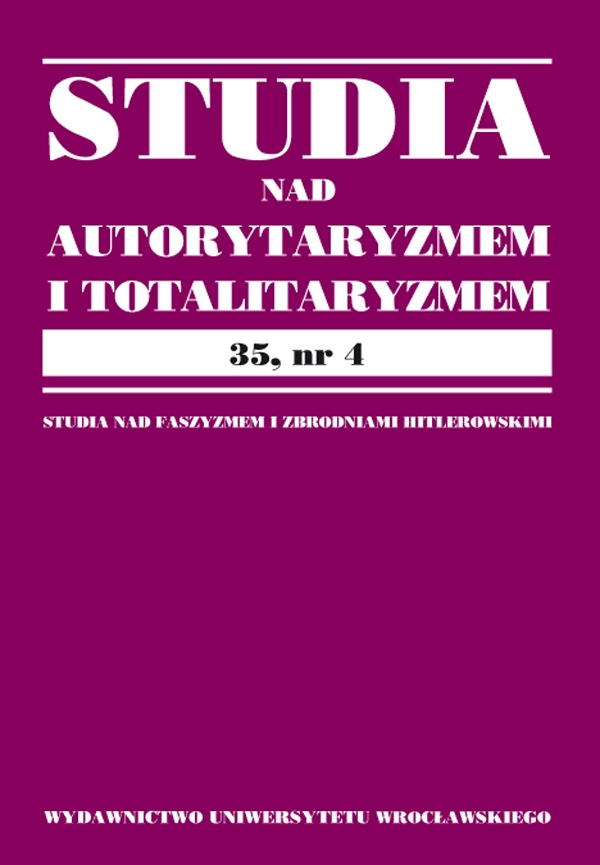

Artykuły

SS-SONDERKOMMANDO BELZEC. A COLLECTIVE PORTRAIT
The subject-matter of this paper’s analysis revolves around the members of SS and German police who, during the 1941–1943 period, belonged to SS-Sonderkommando Belzec or Dienstelle Belzec der Waffen SS — as the extermination camp in Belzec was officially known. It was the first center of “Action Reinhardt,” implemented in the General Government and in Białystok District, in which around four hundred fifty thousand Jews were murdered by the Nazis. In writing of this article its author used documents from German and Polish archives, scholarly and popular literature on the subject and memories. These sources served as a foundation on the basis of which the attempt to create a collective portrait of perpetrators was undertaken. The author of the article, as it is accepted in historiography, based his conclusions on thirty seven members of SS-Sonderkommando Belzec who were at least temporarily employed in the camp — during its building, its operation, the extermination or the erasing of traces. The article analyzes the age of the members of Belzec camp’s personnel, their nationality and birthplace, education, participation in National Socialist organizations, engagement in “T4” action and — in the widest possible terms — participation in the Holocaust. The article describes the process of selection to the SS crew, the principles governing the assignation of functions and duties in the camp, the exchange of members between different centers of “Action Reinhardt,” their future fate and the question of their postwar legal punishment. More attention is paid to two commandants, i.e. Christian Wirth and Gottlieb Hering. The article indicates the similarities and differences between them, their impact on the camp’s operation and their influence over other members of SS-Sonderkommando Belzec.